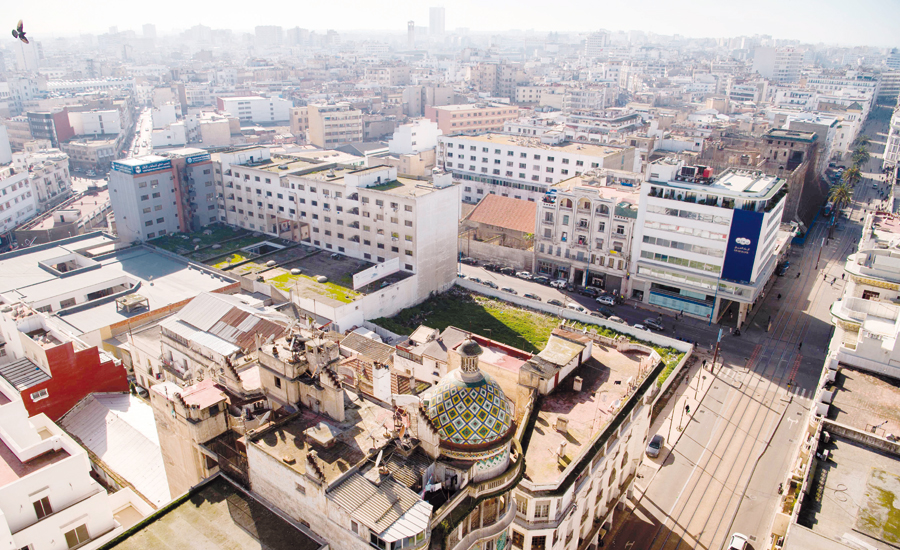

HAMZA MEKOUAR -
Shanties have mushroomed on the rooftops of historic apartment buildings in Casablanca, as the Moroccan city’s once-prestigious centre crumbles below.
Clotheslines, satellite dishes and tangled cables have sprouted on the deteriorating facades of the buildings, constructed nearly a century ago under French rule.
What was once a feted blend of Moroccan and European architecture is falling apart under the weight of an expanding urban population and neglect.
The city “was once at the forefront of world architecture,” architect Rachid Andaloussi says.
But today its early 20th-century residential buildings have been “abandoned by landlords tired of seeing them deteriorate”, says Andaloussi, the head of Casamemoire, an association to protect the city’s architectural heritage.
And a housing crisis in the traffic-clogged economic hub has led Moroccans with nowhere else to live to cobble together makeshift homes on rooftop terraces.
“They’ve squatted in public infrastructure, factories — and now they’ve moved on to the terraces,” Andaloussi says.
Building themselves shelter from corrugated iron, bits of wood and plastic bags, they have come to occupy what were once emblematic architectural spaces.
Casablanca, known by the Spanish translation of its Arabic name Dar al-Bayda (“White House”), greatly expanded under the French protectorate from 1912.
North Africa’s first skyscraper
French architect and urban planner Henri Prost presented his first plan for the Moroccan city in 1915.
In the 1920s and 1930s, Prost and mostly fellow French architects built the city that has become the country’s economic heart.
They created the city’s unique style by blending traditional Moroccan elements like mosaics, stucco and sculpted cedar wood with the European trends of Art Deco and Art Nouveau.
Their work includes the Lincoln Hotel, an Arabesque Art Deco building that was built in 1916 and used by American spies during World War II. But it closed in 1989 and today stands largely in ruins.
The Liberty Building, also called “The 17th Floor”, was North Africa’s first skyscraper when it was built between 1949 and 1951.
And the Wilaya, a former town hall, is an example of the mixed architecture typical of many administrative buildings under the French protectorate.
Architect Driss Kettani says the Casablanca city centre was once a “feat of architecture and urban planning”, “with its wealth of neo-Moorish, Art Deco and Modernist architecture”.
“What was a few decades ago the indisputable heart of the city has today suffered from a lack of maintenance,” Kettani says.
‘Extraordinary potential’
Tenants in these buildings often pay “ridiculously low” fixed rents, and landlords can only remove them if they pay a huge relocation fee.
Neither the tenants nor the owners pay for the upkeep of the buildings.
The city’s old core is also threatened by real estate speculation, as developers look to buy historic properties to tear them down and build modern apartment blocs instead.
Urban planner Mostafa Kheireddine explains that Casablanca’s housing crisis stems from a booming population from successive migration flows to the city in the 1960s, 1970s and 1980s.
“Over the years, it experienced pressure on the urban planning sector that was unprecedented in the history of Morocco’s cities,” he says.
As all of Morocco’s social tensions came to the fore in 1980s Casablanca, “quality urban housing was not given priority,” Kheireddine says.
But times are changing, raising hopes of an urban revival.
The authorities have started upgrading the city centre after what Kettani calls “a realisation of the extraordinary potential of this part of the city”.
The opening of a tram line has given the area’s buildings added value.
And wealthier Moroccans are increasingly buying apartments in the Art Deco buildings, as they become fashionable and the area gentrifies. — AFP
Oman Observer is now on the WhatsApp channel. Click here



